This website uses cookies so that we can provide you with the best user experience possible. Cookie information is stored in your browser and performs functions such as recognising you when you return to our website and helping our team to understand which sections of the website you find most interesting and useful.
Abruzzo: eight wine trends to watch out for
This month’s Abruzzo Wine Experience, organised by the Consorzio Tutela Vini d’Abruzzo, showcased how the wines of this Italian region are evolving, both to appeal to changing tastes and to cope with the challenges of climate change.
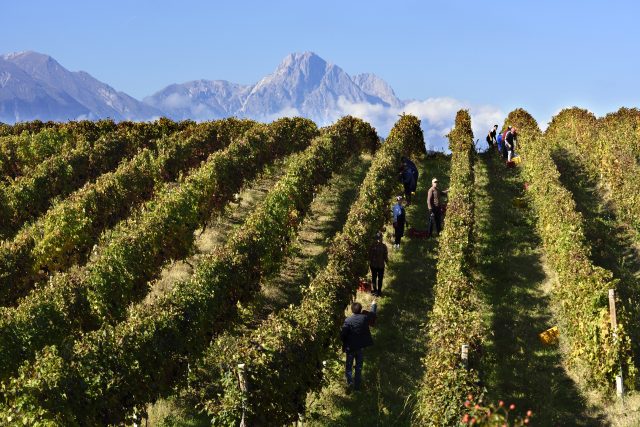
With almost 35,000 hectares under vine, Abruzzo has the seventh largest vineyard area of any Italian region. Historically considered as part of Southern Italy, it’s a region that has often been overlooked as an area producing quality wines, but there’s much more to Abruzzese wine than cheap and cheerful supermarket shelf fillers…
Superiore status
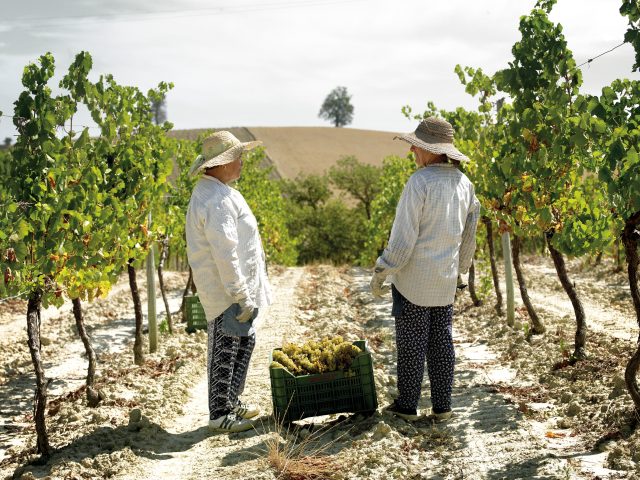
The big news from the region concerns changes to labelling that come into effect with the forthcoming harvest.
The development which could have the biggest ramifications for the region is the introduction of Superiore status. Speaking to db at Abruzzo Wine Experience, consorzio president Alessandro Nicodemi said: “Montepulciano d’Abruzzo is an open denomination, because though we are the only producers, everyone in other regions can bottle it…50% of Montepulciano d’Abruzzo is bottled in other regions. The aim is to create Superiore wines that only Abruzzo can produce, where the whole process, from the harvest to the bottling, is done within Abruzzo. Superiore and Riserva can only be produced in the four sub-zones [Colline Teramane, Colline Pescaresi, Terre de L’Aquila, and Terre di Chieti].”
In addition to the push to premiumise the reputation of Abruzzese by localising production, there will also be a significant simplification of Indicazione Geografica Tipica (IGT) status wines, with the current eight IGT designations being whittled down to just one, Terre d’Abruzzo.
A press release from the consorzio quoted Nicodemi as describing how this reform “creates a strong regional image, eliminating the fragmentation seen today, which is not very incisive”.
Uphill struggles
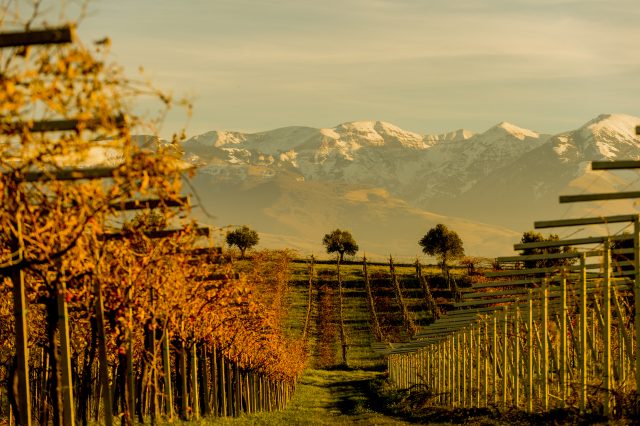
Squeezed between the Apennine Mountains, the backbone of Italy, to the west, and the Adriatic Sea to the east, Abruzzo’s dramatic landscape is a sight to behold. But, the threat of climate change is causing a notable shift in where producers choose to plant.
The Consorzio’s communications director Davide Accera told db: “Winemakers have to work with increasingly erratic weather. When there is a lot of rain and sun it becomes very humid, and the vine leaves can become infected with Pyrenophora, a fungal disease that Pergola Abruzzese vines near the sea are very prone to.”
In response to the difficulties some winemakers were facing at lower altitudes, Nicodemi shared that the maximum planting altitude has been increased from 600 metres above sea level to 800.
Some producers are taking it to extremes, and cultivating grapes at unprecedented heights. Pasetti grows some of its Pecorino at an astonishing 1,050 m.a.s.l. in the Gran Sasso and Monti della Laga National Park.
But altitude brings its own climatic problems – instead of humidity, viticulturists are contending with spring frosts that can be especially devastating to early budding varieties such as Pecorino. “We’ve started using some anti-frost measures,” Accera shared, “but when it comes, there’s nothing you can really do to stop it,” he conceded.
Climatic issues aren’t the only factor at play. Emilio Rapino from Cantina Rapina disclosed that while his winery is located in the seaside commune of Francavilla al Mare in Chieti, his vines are further inland: “It’s hard to buy land by the sea to plant vineyards.”
The reason Rapino cited for the difficulty is because, as a consequence of growth of tourism to the region, coastal land is considered to be prime real estate for hotels and holiday accommodation, and therefore comes at a premium.
As with all trends, there are of course exceptions that prove them. Several years ago, Tenuta i Fauri made the decision to cultivate its Montepulciano closer to the coast as the warmer conditions enabled ripeness to be achieved – further inland the issue was that temperatures begin to drop in late August.
Co-operatives, such a key aspect of Abruzzo’s wine industry, have been fortunate in that they can mitigate bad harvests by sourcing fruit from a range of areas. The solution to coping with the consequences of climate change may well lie in the co-op system.
Concrete evidence
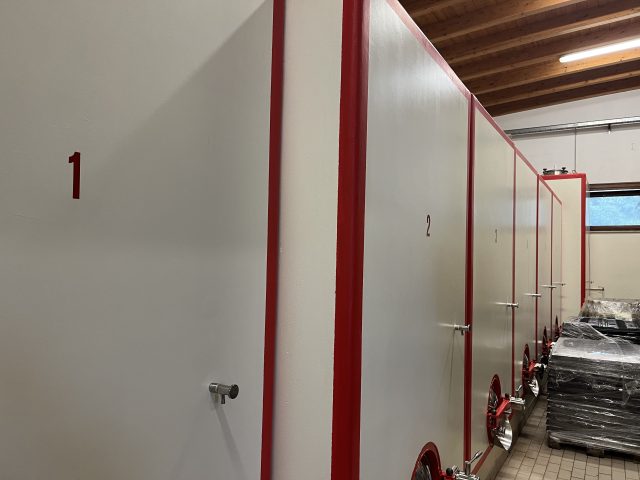
According to Andrea Straccini’s article on what he termed “a concrete renaissance”, written for the consorzio, the increase in Italian winemakers using the material for fermentation vessels after World War II was symptomatic of a broader drive for modernisation, a sign of the country’s building boom.
The arrival of stainless steel vessels, which were more expensive, but easier to temperature control and clean, sounded the funereal bell for concrete.
But reports of the death of cement have been greatly exaggerated – concrete fermentation vessels are becoming trendy again in Abruzzo.
Tenuta i Fauri’s Valentina di Camillo shared that vinification using the material is challenging, but rewarding: “It’s much more hard work, because you can’t control the temperature, but the result is a more expressive wine with clear varietal identity…Concrete was not fashionable, but now it’s coming back.”
One key advantage of concrete is its porosity – enabling some exchange of oxygen that can help to ‘soften’ the wine’s structure in the same way that a stint in oak might, but without the introduction of additional aromas, like vanilla and cedar. Another is that they have high thermal inertia, meaning that they maintain stable temperatures.
While wineries might seldom mention it, concrete is also usually notably cheaper than stainless steel or oak.
Neither as romantic as oak, nor as dazzlingly modern as steel, concrete is a practical winemaking option that is enjoying a new lease of life in Abruzzo.
What have the Romans ever done for us?
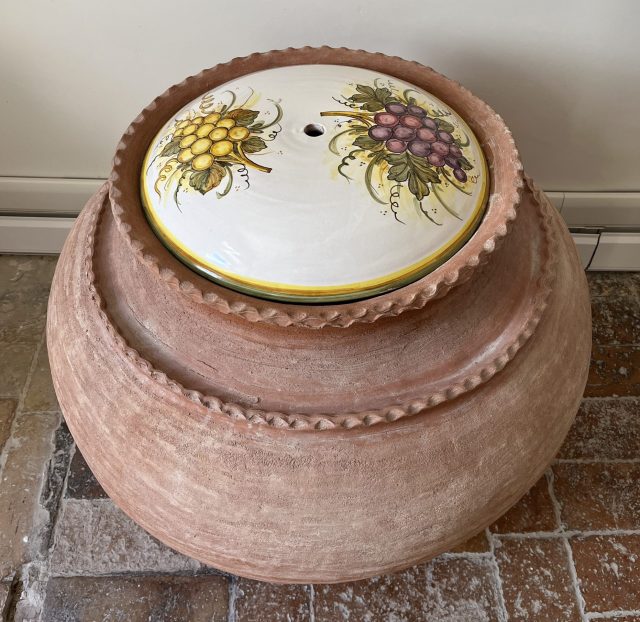
A stark contrast to the brutalist design aesthetic of most concrete vessels, Vinum Hadrianum, based in the hilltop Teramo province town of Atri, has opted for a more classical approach.
The terracotta vessels, dubbed ‘amphorae’ though technically not due to the lack of a pointed base and handles, can be up to 750 litres in volume. They have no lining inside, meaning that the wine, after an initial fermentation in stainless steel, is then in direct contact with the pot. As a spokesperson for the brand said: “It’s a natural cycle – the vines grow on clay, and the wines then go back into clay.”
The spokesperson explained that the vessels’ distinctive round shape was primarily because it is “easy to clean”, rather than offering any particular advantage to how the wine ages (though the wide brim will increase oxygen’s contact with the wine, which, alongside the winery’s low-intervention practices, explains the volatile acidity found in some of the wines).
The winemaking merits of using amphorae, particularly after a first fermentation in steel, are perhaps debatable (the longest time any of the Vinum Hadrianum’s wines spends in the vessel is three months), but it is interesting from a marketing perspective how Hadrianum is using the area’s Ancient Roman history to build its brand.
Vinum Hadrianum’s wines, such as Naevia (Pecorino) and Publicius (Cerasuolo d’Abruzzo), are named after Ancient Roman families from the area around Atri. Each bottle is embossed with an image of an ancient coin, discovered in the area and on display in Vinum Hadrianum’s offices. Natural wine is certainly not to everyone’s tastes, but it’s more palatable than the herb and spice-laced concoctions the Romans actually drank.
As bizarre as it sounds, the forthcoming release of Ridley Scott’s Gladiator 2 might well spur consumer interest in these wines. After the release of the original swords and sandals epic in 2000, there was a meteoric rise in the number of people choosing to study classics. With the much-anticipated sequel set to premiere next year, a similar boom in interest in Ancient Roman history should be anticipated, and that means that consumers will be seeking out classical-themed products – who’s to say that wine might not be a beneficiary of what one might preemptively dub ‘The Gladiator 2 Effect’. In for a sestertius, in for a denarius, after all.
Pecorino’s potential
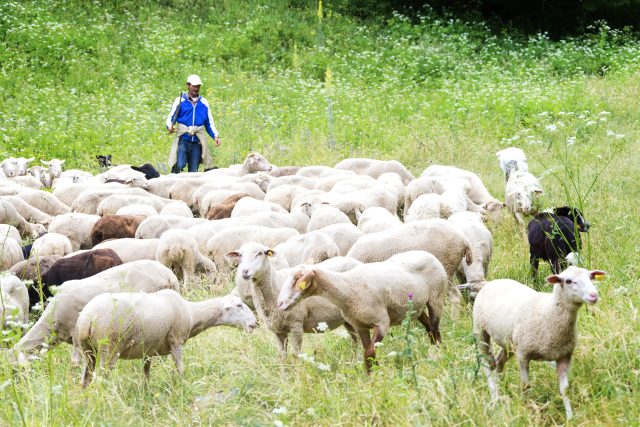
Though your £7 Tesco Finest bottle might suggest otherwise, Pecorino comes at a cost. A spokesperson for Pasetti revealed the startling price disparity different grape varieties in the region fetch: one tonne of Trebbiano comes in at €40, the same mass of Montepulciano grapes will cost €50, but the price of Pecorino dwarfs both of them, at €120 per tonne.
It’s certainly not cheap and, as mentioned earlier, being an early-budder brings problems in the vineyard, but there are great advantages to using this grape.
When posed the question of why they think Pecorino has exploded in popularity over the last 20 years, most producers cited the resultant wine’s acidity and fresh citrus aromas. Whether it’s actually Abruzzese anyway is a different story, with a spokesperson from Terzini stating that the grape comes from Abruzzo’s northern neighbour Marche.
But beyond these lean and clean still wines, the grape also displays an aptitude for making both sparkling and orange expressions.
When it comes to bollicine, Pecorino can be used both to make single varietal wines, and as part of a blend with other varieties, including Abruzzese specialties Trebbiano and Cococciola, as well as those from other regions, like Calabrese Montonico and Passerina, originally from Marche.
In these sparklings, both tank and traditional method, the Pecorino adds a backbone of acidity that theoretically gives them a good degree of ageing potential, though the oldest sparkling example tasted, Legonziano Metodo Classico Brut 2020, was too young to put this to the test.
As far as orange wines are concerned, skin-contact Pecorino is probably unlikely to win over the naysayers, but for those who are partial to this style, it’s worth seeking out due to its aromatic intensity and subtle tannins.
The Cerasuolo on top

Not to be confused with Sicily’s Cerasuolo di Vittoria, Cerasuolo d’Abruzzo (‘cerasuolo’ being a reference to cherries) is, depending on how you look at it, a dark rosato or light red wine made from Montepulciano grapes that is best served after a brief fridging.
Cerasuolo began as a byproduct of Montepulciano d’Abruzzo, bled off the must to increase the concentration of the red wine. Slowly but surely, this saignée wine came to be appreciated as a distinct style in its own right, and producers began to cultivate fruit expressly for its production. In 2010, Cerasuolo d’Abruzzo was given DOC status.
In a masterclass on this Abruzzese specialty, Italian wine aficionado and db correspondent Filippo Bartolotta explained: “Producers struggled to sell it [Cerasuolo d’Abruzzo] because it was too heavy for the fish and too light for the meat…People often say that Cerasuolo is a Montepulciano that didn’t make it!”
Bartolotta also shared that Torre dei Beati’s Fausto Albanesi, an engineer by training, described the style as “masochistic” from a winemaking perspective, due to how difficult it is to achieve consistency with. Fortunately for the drinker, Torre dei Beati’s Cerasuolo d’Abruzzo is a pure pleasure to consume – a ruby-hued red cherry, plum and blue flower-forward delight in the glass.
Ageing Cerasuolo d’Abruzzo is also not beyond the realms of possibility. Bartolotta noted that “lightness is not necessarily a lack of intensity,” and cited 2013 as a vintage that has held up particularly well.
But Cerasuolo d’Abruzzo is a wine suffering from an identity crisis.
The sticking point is marketing Cerasuolo as a rosato. Tenuta i Fauri sells its Cerasuolo d’Abruzzo in a green glass bottle, a conscious decision to avoid the clear packaging usually utilised for pink wine. However, Camillo shared that, at the request of the importers, the labels of bottles destined for the US market are adorned with an additional explanative sticker which reads: “Tanned on the outside, pink on the inside.”
The colour from some of the darker expressions is what one might expect from a colder climes red, not a rosé, and for a consumer base obsessed with pale pink Provençal plonk, it may be a shade (or several) too far to be considered in the same category. The path of least resistance might be to promote Cerasuolo d’Abruzzo as its own style. Rapino concurred: “I don’t sell my Cerasuolo as a rosé, I sell it as a chilled red wine!”
Join the light side
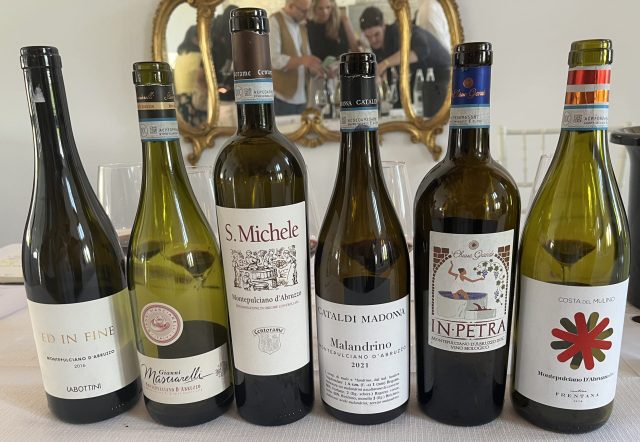
Just slightly further along the red wine spectrum, the other style worthy of consideration is lighter Montepulciano d’Abruzzo.
Bartolotta mentioned that he had considered doing his masterclass on light Montepulciano d’Abruzzo as the second half to his one on Cerasuolo d’Abruzzo, and there is a certainly a degree of continuity when tasting these two styles, officially designated as separate, side by side. Mirroring his earlier masterclass, he went so far as to joke that “Montepulciano d’Abruzzo is a Cerasuolo that didn’t make it!”
Part of the push for lighter Montepulciano is a growth of sentiment against against big and bold Parkerised “Schwarzenegger” wines, as Bartolotta calls them.
To use a metaphor employed by Bartolotta, what happens when you train this thick-skinned grape as an athlete, rather than a bodybuilder?
The results can vary significantly. Decisions concerning which Montepulciano clone to use (R7 is a popular choice for this lighter style, due to its thinner skin), whether to plant on clay, sand or stones, and if one opts for carbonic maceration and/or oak maturation will all profoundly alter what ends up in the bottle. The consistent attribute among Bartolotta’s eclectic selection was approachability.
One might speculate that, with growing seasons generally becoming hotter and hotter, we might see a further increase in planting altitude permitted for Montepulciano d’Abruzzo DOC, especially for vineyards with a south-facing aspect.
Tomorrow, the World!

One striking thing about Abruzzo Wine Experience was how incredibly international it was, with large contingents of North American and East Asian media in attendance, as well as an abundance of Europeans.
From that alone, it is quite clear that Abruzzo has some serious export ambitions. Indeed, the value of exports of Abruzzese wine last year was in excess of €225 million, 10% above the 2o21 figure, a much-needed post-pandemic boost.
The five most valuable export markets for the region’s wines, where 60% of all Abruzzese wine exports end up, are, in descending order: Germany, USA, Canada, Switzerland and the UK.
Last year, the French market for the wines increased by an astounding 57%, while Austria shot up by a no-less-impressive 53%.
While the growth in Asia was more moderate, with Japan up 19%, South Korea up by 25%, and China actually regressing slightly by -2%, it is clear that Abruzzo is becoming an increasingly recognised name in these markets.
Some producers are also consciously targeting less-established wine markets.
A spokesperson Vignamadre Famiglia di Carlo shared that there had been “promising results” for the company on Sri Lanka and Brazil.
He attributed success in the latter partially to the large number of people of Italian heritage living there. As for the former, he said: “Sri Lanka is absolutely a new market – we sent our first shipment there about a month ago, and we still don’t know what they prefer or don’t prefer yet.”
The secret to success abroad might, according to the spokesperson, lie in pushing wines with a sweet touch: “I believe that more approachable wines with a bit more residual sugar can open up the market.”
However these ambitions unfold, it is clear that Abruzzo is determined to set itself on a course to become a wine powerhouse that can compete with its northern neighbours.

